I have good news and bad news. I’ve spent the last two Thursdays up in Los Angeles taking pictures of iconic LA sights at night, and I’m pretty happy with the results. That’s the good news. The bad news—maybe—is that I got hooked on a particular style: deliberately overexposing my shots so the nighttime city looks almost overpoweringly bright. I happen to like this, but you might not. Nevertheless, over the next few months you’re going to see a whole lot of pictures shot in this style.
But I’m going to ease into it. Today, I’ve got a series of pictures of the LA skyline, each with its own particular appeal. To start us off, here’s a picture taken by my father in the early 40s. My best guess is that it was taken from somewhere around Bronson Canyon, and the brightly lit street is Western Avenue. Needless to say, the downtown skyline doesn’t exist yet:
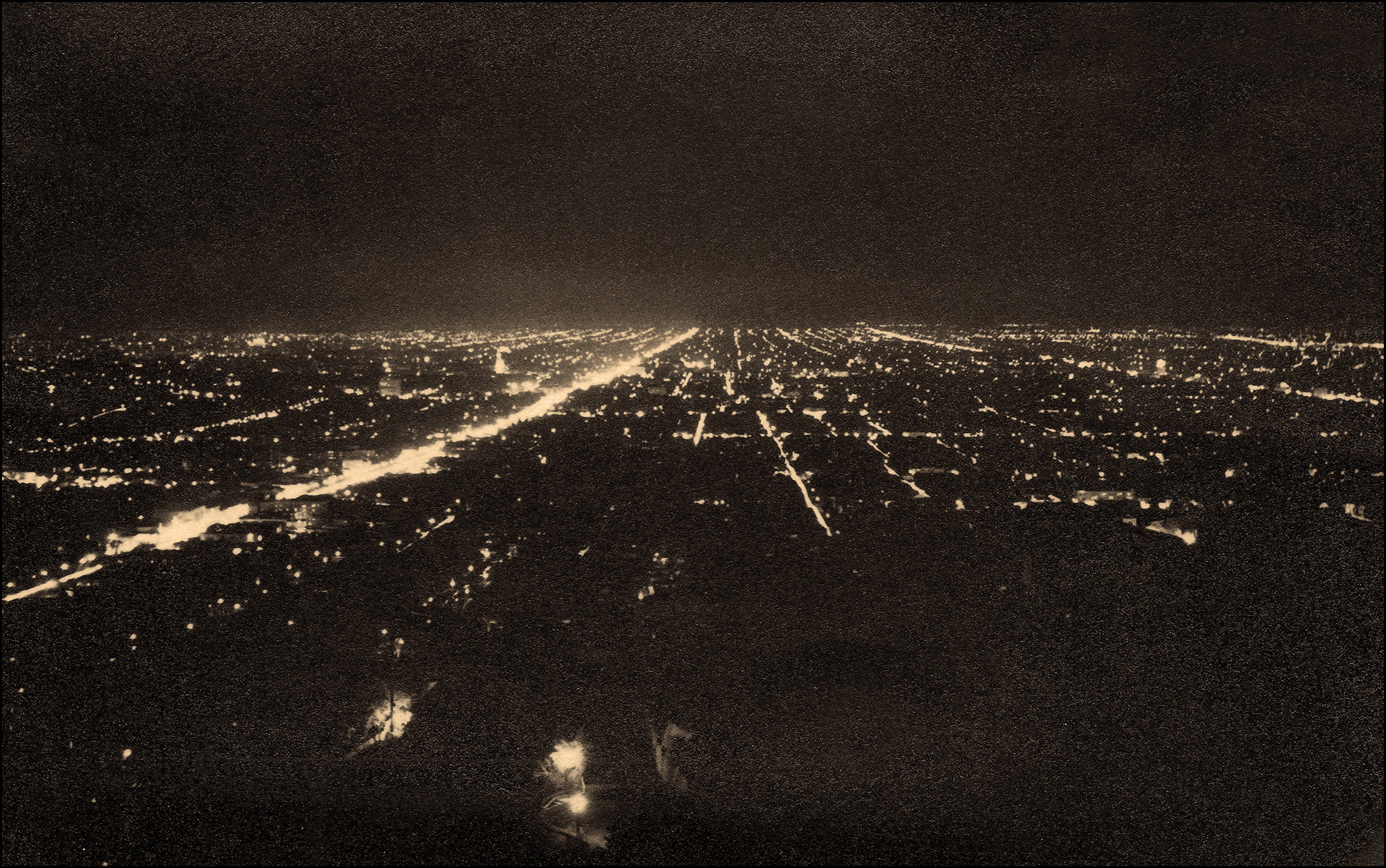
(The speckles in the black areas are there because my father printed the picture on matte paper and that produced little patterns when I scanned it. There’s probably a way to get a better scan, but I’m not sure what it is.)
Next up is the iconic LA skyline shot taken from Griffith Park Observatory. I’m delighted with how this turned out. The observatory itself is on the left with the moon rising right behind it, and then I stitched together a second shot to create a nice, wide panorama. The street looking dead ahead is Normandie. Vermont is to the left and Western is to the right. This is a really pretty picture:
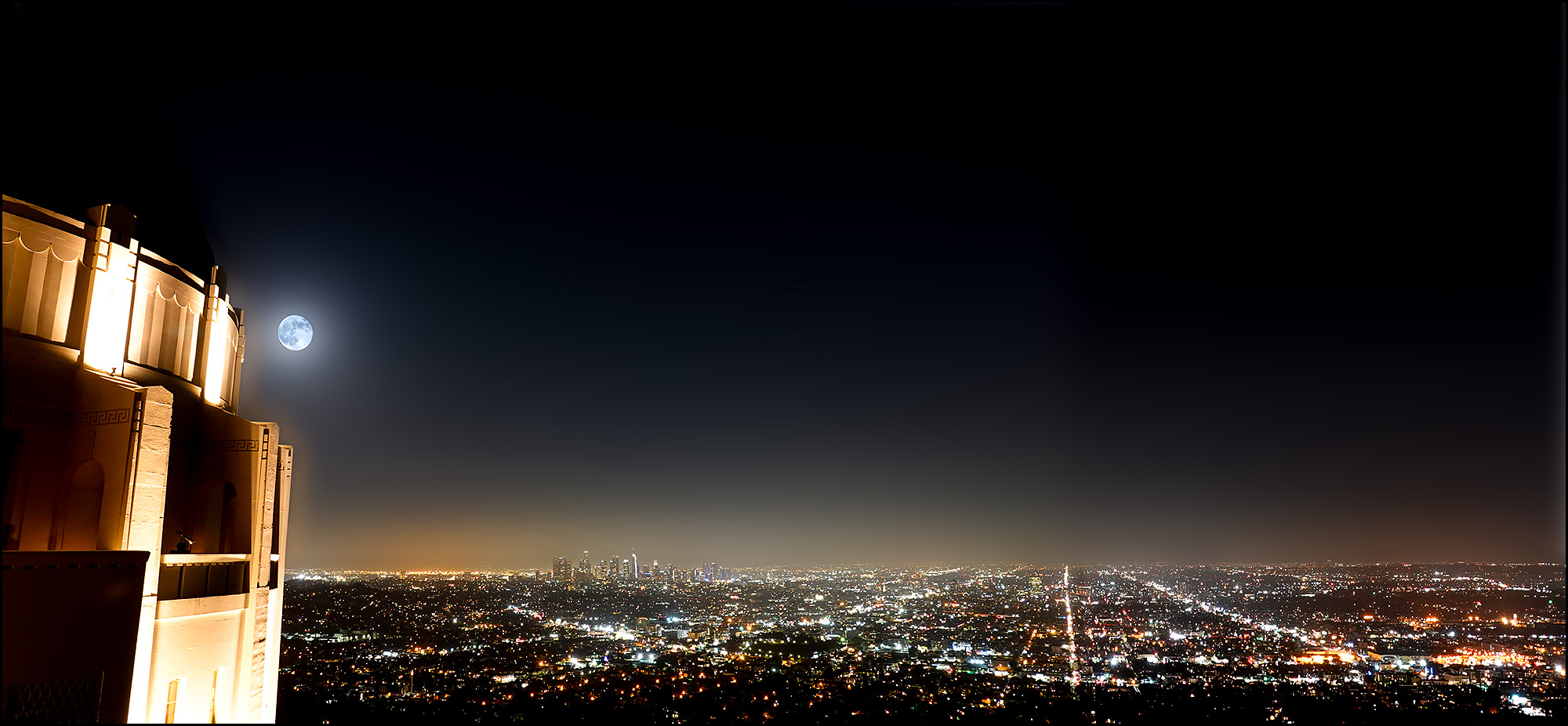
Next is a picture taken from Radio Hill Gardens, a small park on a hill right next to Dodger Stadium. The park itself isn’t much, and not really someplace you want to be at night anyway. But it does have a terrific view of downtown. You can see City Hall off to the left:
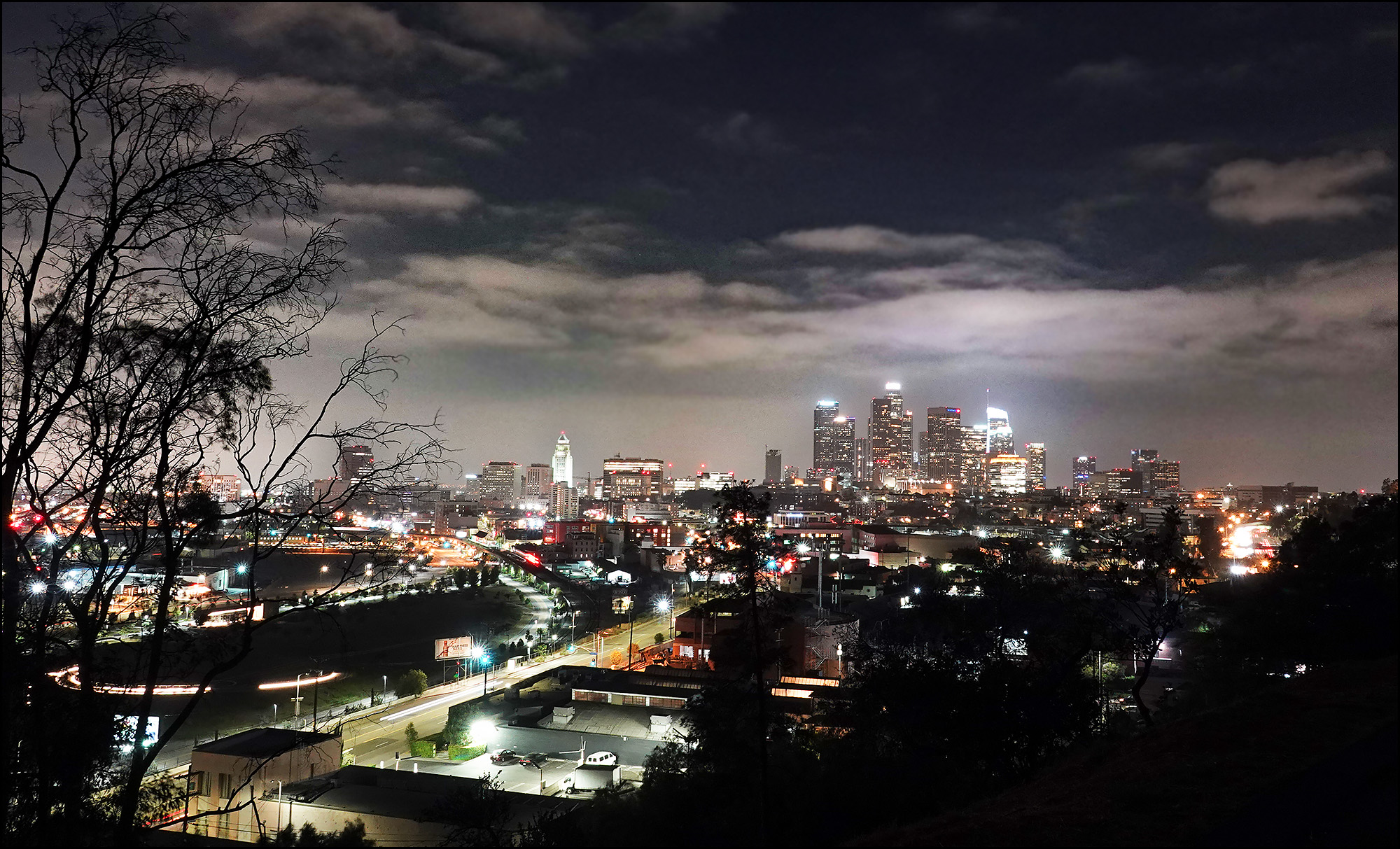
Next is a view of LA that you won’t recognize even though you’ve probably seen it before. There’s a street in Boyle Heights that’s frequently used as a setting in car commercials because, surprisingly, it’s unique. It’s just about the only place in the city where you have a view of the skyline looking west from an ordinary, 1930s-era neighborhood. The commercials are typically shot near sunset with a very long lens and some bungalows on either side of the road. The effect of this very careful composition is a hazy, lazy small-town feel with skyscrapers in the far distance. I wasn’t trying to recreate that vibe, just to show what it looks like at night:
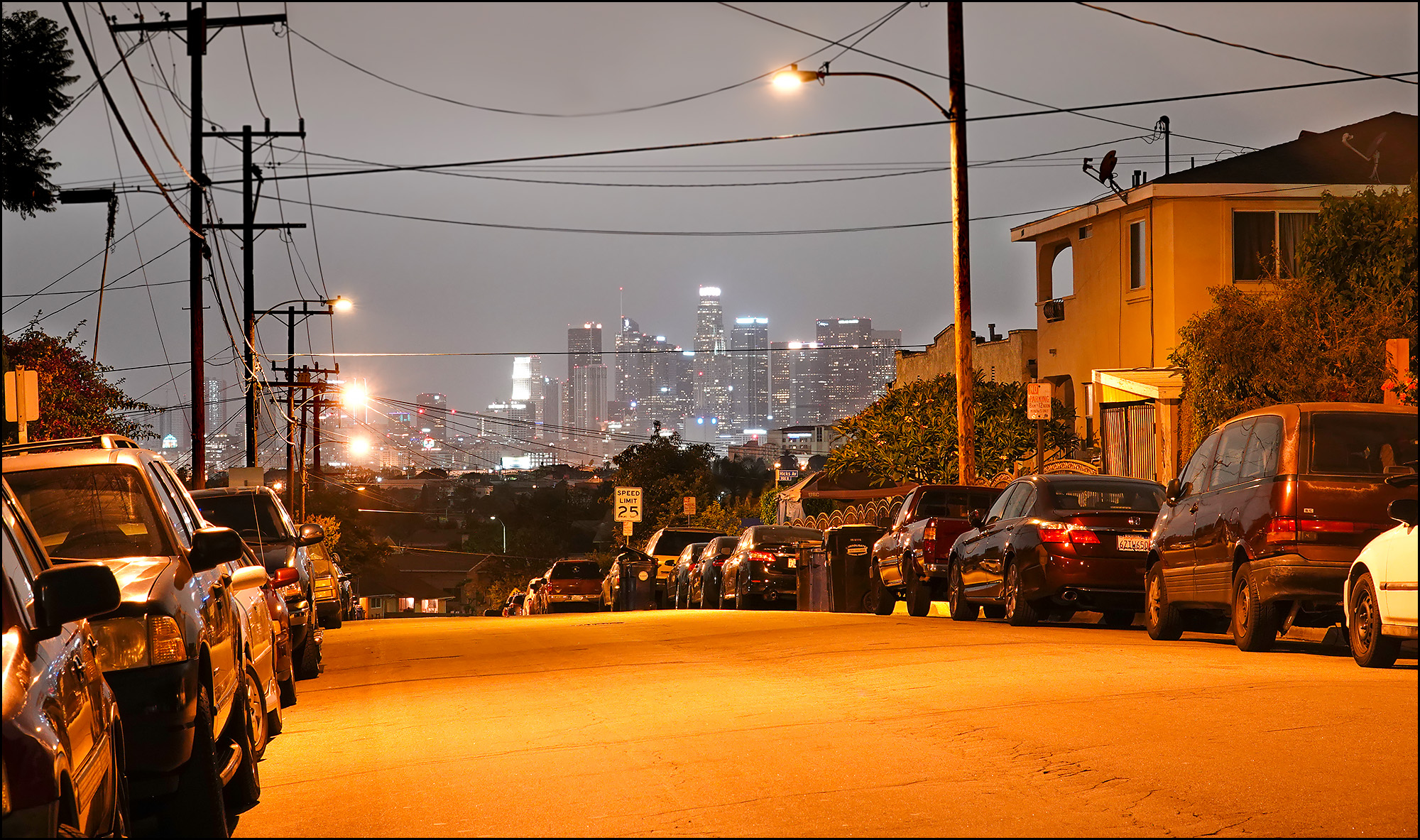
Finally, here’s a closeup taken from a neighborhood just south of Dodger Stadium. There’s a spot called Spiders View (you can find it on Google Maps) that’s a well-known scenic spot, but I chose to take this picture from a couple of streets away because I liked the palm tree in the foreground. I didn’t especially like the power pole in the foreground, but that’s the big city for you. This picture was taken on a misty, almost foggy night, and I shopped out a whole bunch of power and phone lines:
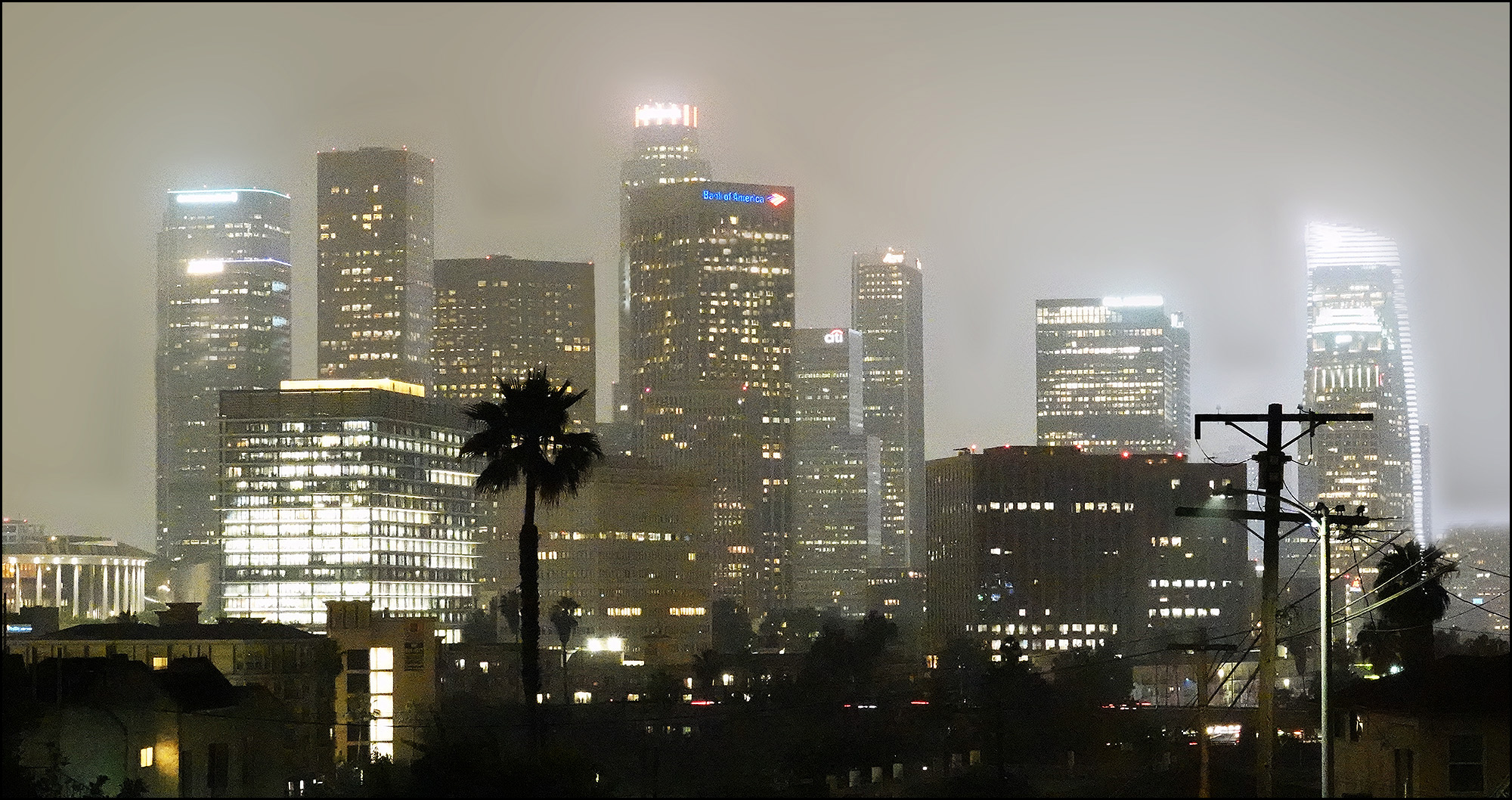
So there you have it: the LA skyline at night. Someday I might go back and try to get a picture of the skyline from Wilshire looking east, but that’s a tougher nut. There are really no good places to take a photo in that direction except from the rooftops of tall buildings, and I don’t have access to any rooftops in Westlake or MacArthur Park—especially at 1 in the morning. So that’s a project for another time.

















